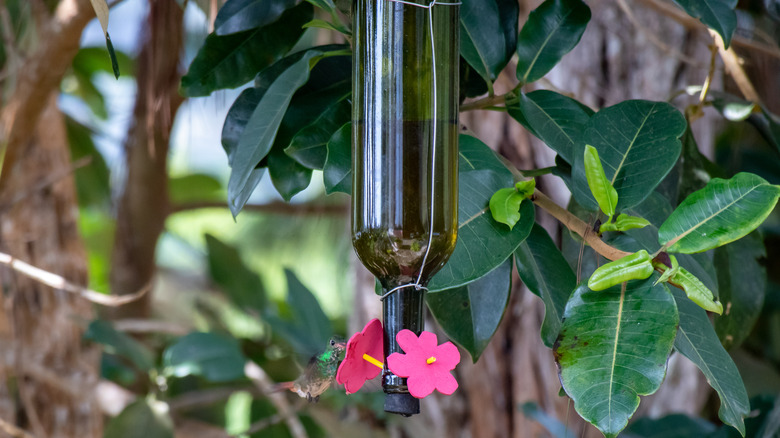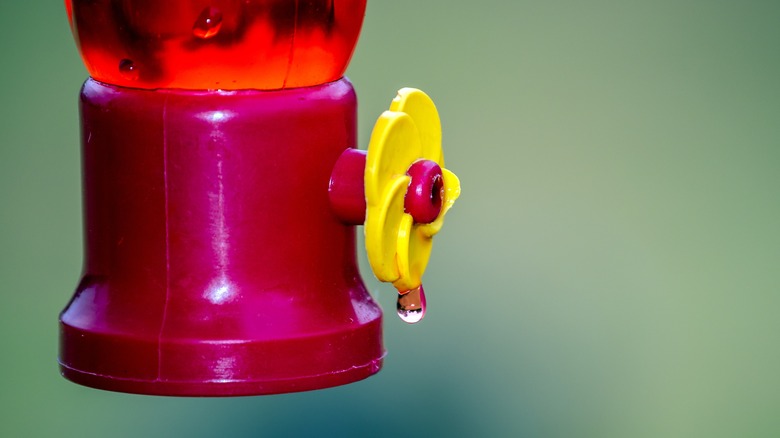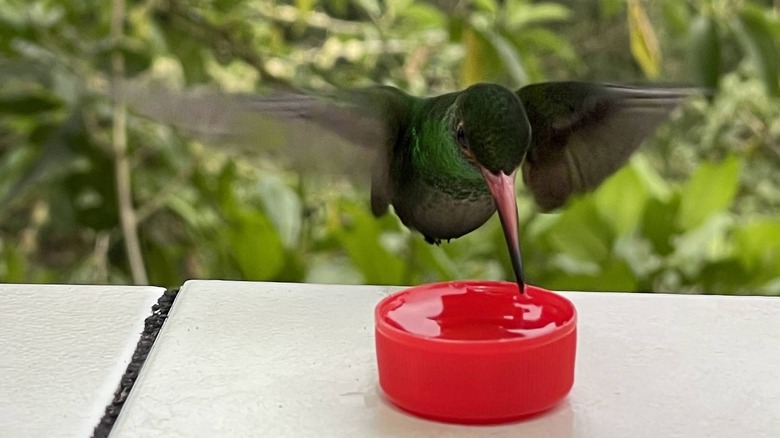Dangerous Issues To Avoid When Making Your Own Hummingbird Feeder
Gardeners and hummingbirds go way back. Nature lovers enjoy watching the colorful birds flit around, and hummingbirds are always happy to find a spot where they can stop and have a snack. Many enthusiasts choose to DIY their own feeders. However, there are some crucial errors you don't want to make with your hummingbird feeder. With any DIY project that can affect wildlife, you need to make sure it is safe for that animal. In this case, it's vital to build it securely and regularly monitor it for leakages. Likewise, an open container can have the same dangerous result as a leaky feeder.
If a hummingbird comes across a dripping feeder, they'll unknowingly stick their beaks into the tube to drink their food. As they're sipping, the sugar water will begin to drip on their face and down their bodies, causing their feathers to become incredibly sticky. Brushing up against the leaky feeder also results in sticky feathers. If they can't find a spot to bathe quickly, the sticky liquid could cause their feathers could fall out, which may affect their ability to regulate their body temperature, or make it difficult for them to fly. If they struggle to fly, it'll be challenging to find the amount of food they need to survive. Being flightless also puts them at a greater risk of being attacked by a predator, such as outdoor cats.
How hummingbirds drink and what causes leaks
Understanding how hummingbirds consume sugar water can help you DIY feeders that are beneficial rather than harmful. Although it may seem like they're sucking in nectar through their beaks, hummingbirds have a unique way of eating their food. Rather than lapping the liquid up like most animals, hummingbirds use a long, forked tongue that separates when they drink. The hair-like extensions on their tongue, lamellae, extend out to help them grab the sugar water and plop it back into their beaks. When taking their next sip, the nectar on their tongues shoots toward their throats, essentially pumping the liquid back with each drink. So, if they stick their beaks into a leaky feeder, it can drip sticky sugar water onto them as they pump it into their mouths.
Even if you DIY a safe feeder, it may leak for several reasons, including barometric pressure from weather changes, improper cleaning, damage from animals, or too much heat from the sun. Place your feeder in a spot that receives shade during the hottest parts of the day to keep it from overheating (and help keep the food from spoiling). Replace the food every three to five days, and clean your hummingbird feeder with soapy water weekly or twice per week in hot weather. Regular cleaning sessions are also the perfect time to double-check for any leakages. Lastly, make sure it's installed properly, as mistakes like screwing it in incorrectly could cause sugar water to drip out.
Avoid open containers of sugar water
It may sound like a simple DIY to just set out an open container of sugar water, but similarly to using a leaking hummingbird feeder, these can also be risky. Sometimes, hummingbirds will hover while they drink the nectar, but other times, they'd prefer to rest for a bit. If they put their feet on the edge of a lightweight container, it could easily tip over and splash them. It's also possible they could accidentally fall into the sugar water or brush up against it, causing the sticky drink to saturate their feathers, potentially making them no longer waterproof. Instead, build closed hummingbird feeders with small holes or tubes for them to drink from, ideally facing upward to avoid leakage.
Attracting hummingbirds to your garden with feeders can be beneficial when done correctly. Hummingbirds need to intake a lot of calories due to their rapid metabolism. Because they consume more than twice their body weight in nectar or insects, they need to find a food source every 10 to 15 minutes, visiting thousands of flowers every day. By keeping up with the maintenance on your homemade feeder, you'll be able to provide them with a reliable source of nutrition while keeping them safe in the process.


